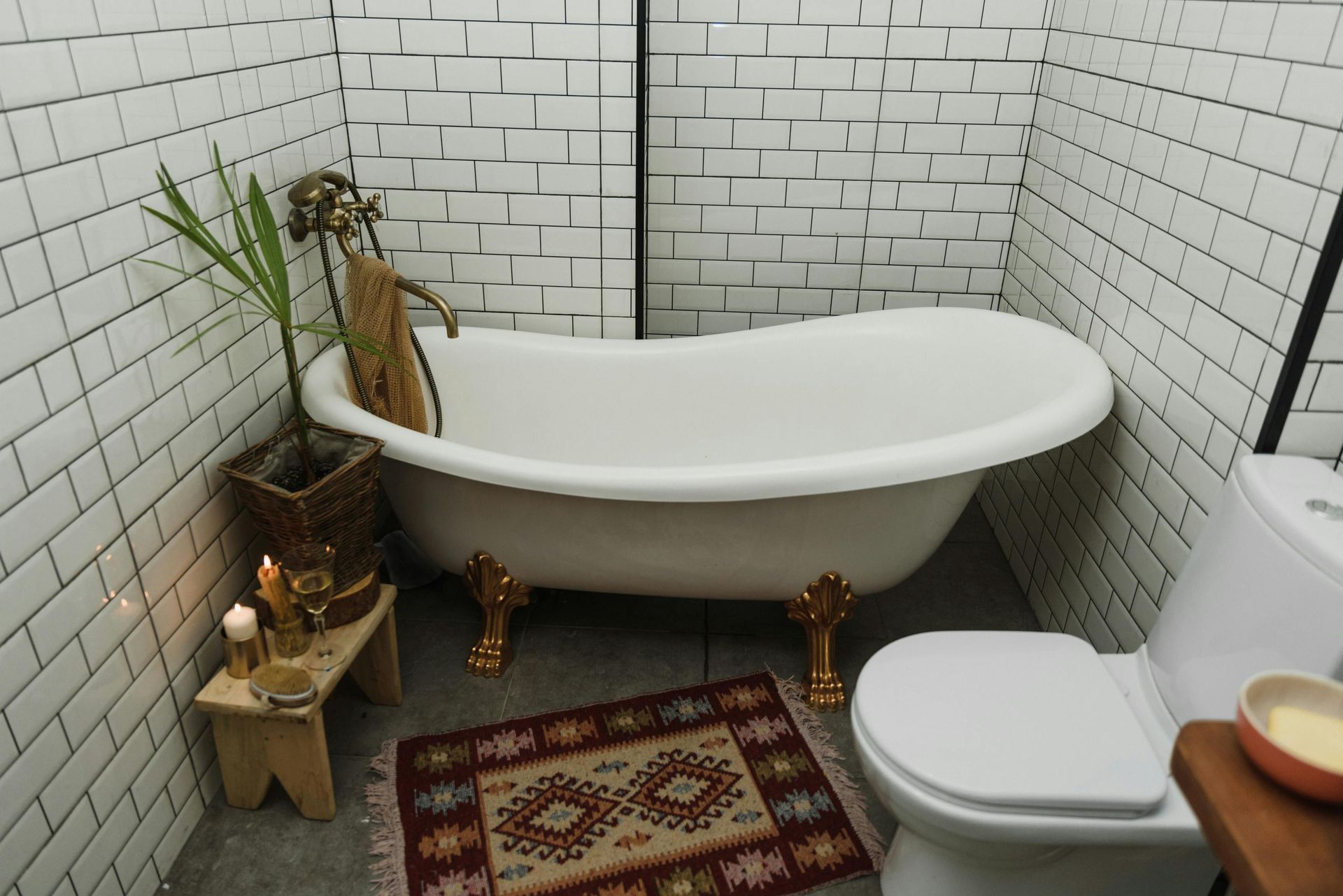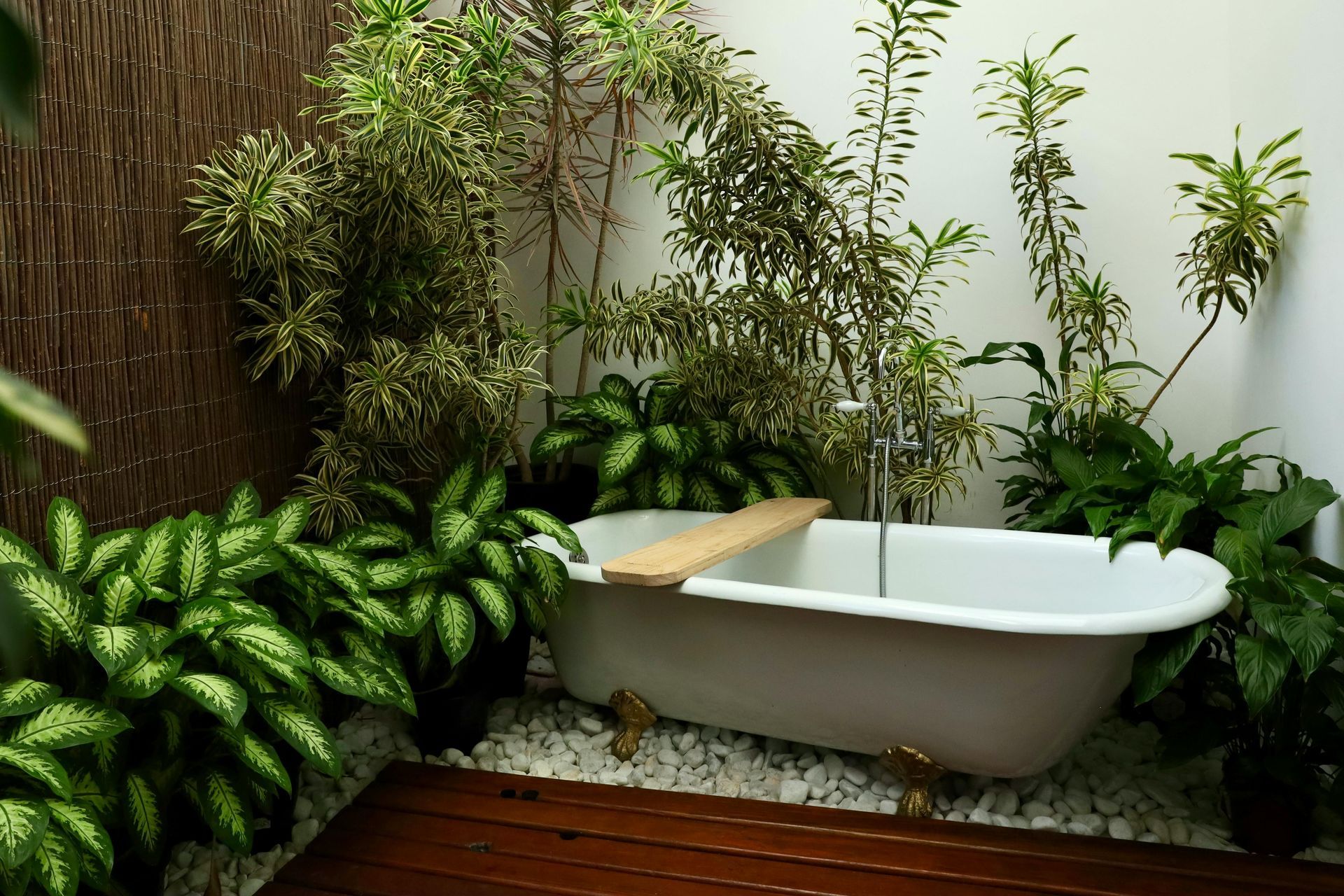Latest Articles
Our latest guides, news and tips from our 20 years in bathrooms and wet rooms.

Small bathrooms can be surprisingly tricky to design. You’ve got all the essentials to fit in; loo, sink, shower or bath, storage, and not much space to do it in. But with the right layout, you can create a bathroom that feels functional, spacious, and even a bit luxurious, no matter how compact the footprint. In the UK, many homes, especially terraces and semis (just like a lot of Yorks housing), have fairly small bathrooms, often squeezed in as part of a loft conversion or an en suite or added on to the kitchen as a later addition. That’s where clever planning really pays off. Start With What You Have Before you start sketching out dream layouts, it helps to understand the space you’re working with. Look at where the existing pipework is as moving plumbing can be costly and sometimes unnecessary. If your current layout has things more or less where they need to be, you might just need a refresh rather than a full overhaul. However sometimes a total rethink opens up space you didn’t know you had. Swapping a full-size bath for a walk-in shower can free up valuable room, and a wall-hung toilet and basin can create a more open feel by exposing more floor. Though think about use cases, will you ever want to bath children so still need a bathtub? Bathroom Layout One of the most efficient small bathroom layouts is the classic three-wall layout. This is where the toilet, basin, and bath or shower are all positioned against separate walls—usually forming a ‘U’ shape around the room. This approach maximises use of available wall space and keeps each area clearly defined. It’s practical and works particularly well in narrow bathrooms, as it allows a clear line of sight through the room, making it feel bigger. Another popular option for small bathrooms is the back-to-wall layout. Here, all the main fixtures—bath, basin, and toilet—are placed along a single wall. This approach is great for saving on plumbing costs, as everything’s in a neat line, and it keeps the floor area open, which can make the room feel more spacious. It’s ideal for rectangular rooms, especially those with the door at one end. In really tight bathrooms, using corner fixtures can be a game changer. Corner toilets and sinks help to free up central space and reduce the amount of wall that each item takes up. Similarly, quadrant shower enclosures (the ones with the curved front) are brilliant for slotting into the corner and giving you a decent showering space without a sharp edge jutting into the room. Wet Rooms are Not Just for Luxury Homes Wet rooms might seem like something you’d only see in a high-end hotel, but they can actually be a smart option in small bathrooms. By waterproofing the entire room and installing a walk-in shower with no tray or enclosure, you make full use of the space without any visual barriers. The key is good drainage and high-quality tanking (waterproofing). It’s a more involved job, but in the right property and with the right builder, a wet room can transform even the smallest boxy bathroom into something truly modern and stylish. Storage That Doesn’t Eat Space Good storage is essential in a small bathroom, but bulky cabinets or standalone units can quickly eat into precious space. Built-in storage, like recessed shelves in the wall or above a toilet cistern, keeps things tidy without cluttering the room. Mirrored cabinets are another solid choice—they do double duty by hiding away toiletries and reflecting light to make the space feel bigger. Wall mounted vanity units offer a smart compromise between storage and space saving. By lifting them off the floor, you preserve the sense of openness while still getting somewhere to stash your bits and bobs. In many UK homes, the bathroom door swings inward—usually because it’s always been that way. But in small bathrooms, that inward swing can take up vital space. Swapping to a sliding door, either pocket-style or external, can free up the area behind the door for towel rails, storage, or simply more movement space. Alternatively, a door that opens outwards (if hallway space allows) might make the room feel far less cramped. Lighting and Colour Choices Matter While layout is all about physical space, it’s worth remembering that visual space is just as important. Light colours, large-format tiles, and well-placed lighting can all contribute to the feeling of spaciousness. Use vertical lines to draw the eye upward—tall tiles or ladder-style towel warmers help here. Keep the palette light and neutral, but don’t be afraid to add contrast or a pop of colour in one area to add personality without overwhelming the room. Designing a small bathroom is all about making the most of what you’ve got. That might mean choosing a short projection toilet to save a few centimetres, or opting for a combined shower and bath unit to tick both boxes. Even little details, like fitting the towel rail above the radiator or choosing a mirrored cabinet that sits flush to the wall, can make a big difference. When space is at a premium, a well planned layout tailored to your home, lifestyle, and budget is worth every bit of time and thought.

Freestanding baths have made a serious comeback in recent years. Once considered a luxury found only in period homes an boutique hotels, they’re now found in bathrooms of all shapes and sizes. We have found that a retro roll top really suit some of the period properties around Yorkshire when combined with a sympathetic renovation. But are they a practical choice, or just a passing trend? The visual impact of a freestanding bath can’t be beat. There is something magical about the look of a smart bath with space around it. For customers looking to create a spa-like feel at home, it’s often high on the wishlist. There’s a wide variety of designs on the market, from classic roll tops with claw feet to modern, minimalist tubs with sleek lines and matte finishes. As a bathroom fitter, it’s always rewarding to install something that transforms a space so dramatically. Space needs to be a consideration. Freestanding baths usually require more room around them compared to built-in alternatives. You need clearance on all sides, not just for aesthetics, but for cleaning and maintenance too. In smaller UK homes, this can be a challenge. A bath squeezed up against a wall or radiator doesn’t just look wrong – it can be a nightmare for the homeowner when it comes to cleaning behind it or dealing with plumbing access. We would advise against this typically. Installation is another point that needs careful planning. With a standard built-in bath, pipework is typically hidden behind panels or within walls. With a freestanding model, everything’s on show or needs to be concealed beneath the floor or on show with designer pipework. This adds time and complexity to the job, and that adds cost! Floor reinforcement may also be necessary, especially for heavier cast iron baths or loft installations. Many suppliers now offer more lightweight acrylic models that are easier to install and maintain. Some even come with integrated waste and overflow systems, which can make the plumbing side a bit more straightforward. For a showpiece in a guest bathroom, a freestanding bath is a brilliant choice. For a busy family bathroom? It might not be the most practical. Another point worth noting is the taps. Wall-mounted or floor-mounted taps are common with freestanding baths but both require careful positioning. A floor mounted option in particular can add to the overall cost and complexity, especially in homes with solid floors. In the end, whether a freestanding bath is a good idea comes down to balancing style with lifestyle. As a bathroom fitter, it’s about helping homeowners make informed choices – ensuring the bath not only looks fantastic but functions well for their needs. And when done right, there’s no doubt a freestanding bath can take a bathroom from ordinary to outstanding.

Is CORGI Register Still Valid? If you’ve been a home owner for a while, you might remember the days when the CORGI Register was the standard for gas safety in the UK. The little orange logo used to be everywhere, on vans, ID cards and invoices. But now, no, CORGI is no longer the official gas safety register in the UK. But there's a bit more to this! If you're hiring a tradesperson for work involving gas, be that a boiler replacement, a new gas hob, A gas fire or even relocating a gas pipe, it’s really importantn to know who’s qualified and what to look out for. What Was CORGI? CORGI stands for the Council for Registered Gas Installers. It was set up back in 1970 in response to a number of serious gas related incidents across the country. Its purpose was to register gas engineers and make sure they were competent, safe, and working to national standards. For nearly four decades, CORGI was the body responsible for making sure anyone working with gas appliances in homes and businesses was trained and certified. What Happened to CORGI? In April 2009, the responsibility for gas safety in the UK shifted from CORGI to a new body: the Gas Safe Register. This change was made by the Health and Safety Executive (HSE), the government authority responsible for regulating workplace health and safety. The move wasn’t due to any major failings by CORGI but was part of a wider government review into how the industry could be regulated more effectively. The Gas Safe Register took over the official role of regulating gas engineers and has been the recognised standard ever since. If a plumber or heating engineer tells you today that they’re “CORGI registered,” they’re either behind the times or possibly trying to trade off the old brand recognition. While some engineers may still have CORGI ID cards from years ago, these are no longer valid for carrying out gas work legally in the UK. So Who Should You Be Hiring Now? When you need any work done involving gas—installing a boiler, moving a gas pipe, servicing a fire—you must use an engineer who is Gas Safe registered. This is the legal requirement, and it’s there for good reason. Gas Safe engineers carry a yellow ID card that shows their registration number, their photo, and a list of the types of work they’re qualified to do. It’s a good habit to ask to see this card before any work starts. Don’t worry about offending anyone, any legitimate professional will expect it. What About Plumbers and Bathroom Fitters? Here’s where things can get a little confusing. Many plumbing jobs have nothing to do with gas at all. Installing a new shower, fitting a toilet, or replacing radiators. As these don't touch gas a Gas Safe registered person is not needed. Just to ass a little more confusion, even within the Gas Safe Register, engineers are only qualified for certain types of work. Some specialise in domestic boilers, others in commercial systems or LPG appliances. Their ID card will tell you exactly what they’re allowed to do! Why Does the Confusion Persist? Even though CORGI hasn’t been the official body for over 15 years, the name still pops up from time to time. That’s largely because it was around for so long and built up a lot of trust with the public. Some engineers still mention it on websites or business cards. And some homeowners who haven’t had major work done in a while may not have heard about the change. But times have moved on, and the Gas Safe Register is now the only body that matters when it comes to gas safety. It’s the name to look for, and it’s backed by the HSE. For extra peace of mind, you can even check an engineer’s registration online at the Gas Safe Register website, just by typing in their ID number. Here at GW Plumbing, with the exception of apprenteices (who are supervised at all time), we are all gas safe registered so any job is fully covered.